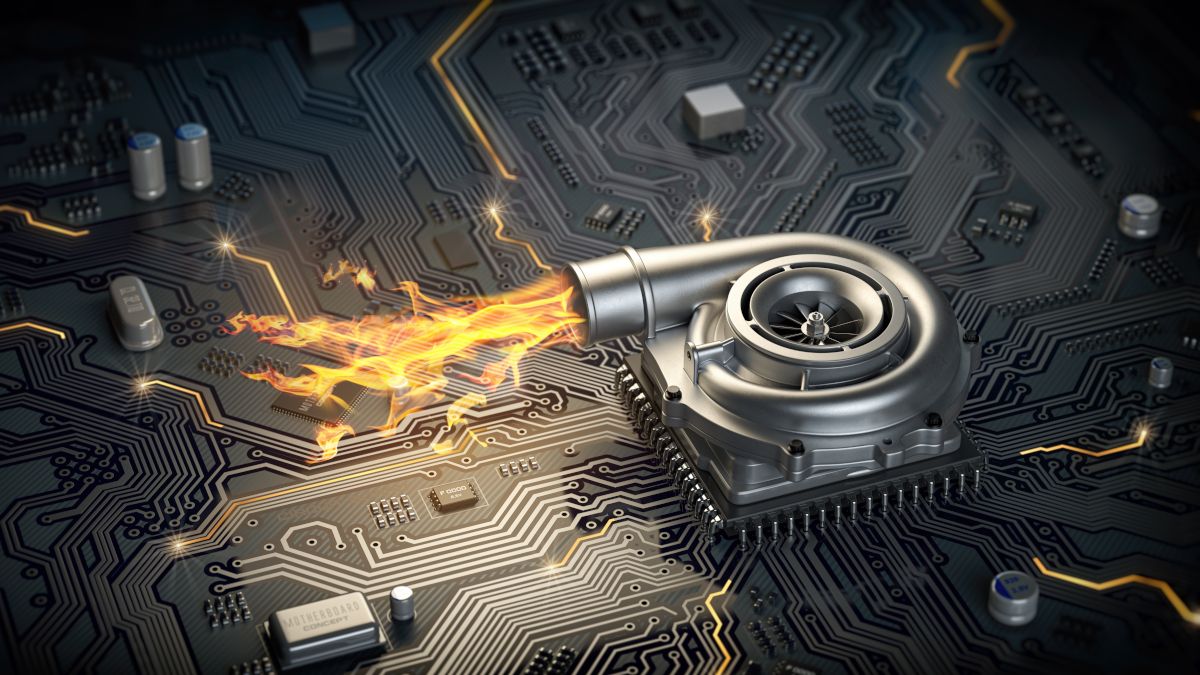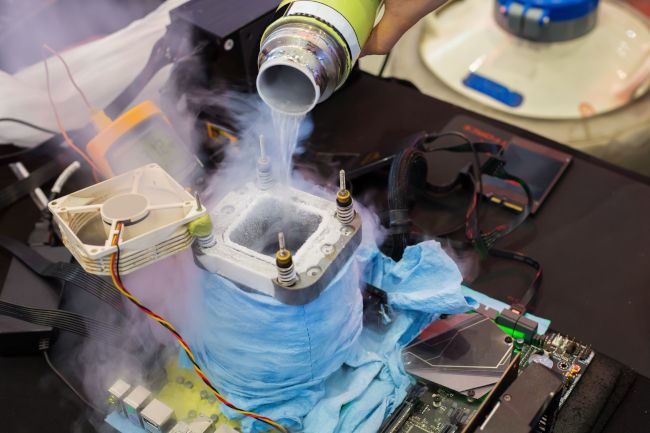Quick Links
Overclocking is a hallowed tradition among PC enthusiasts to get the best from their silicon. However, with advances in manufacturing and automated performance management, is there any point in overclocking your computer? If overclocking isn't dead, who is it for?
The What and Why of Overclocking
Overclocking forces a processor or semiconductor component (such as a GPU, CPU, or RAM) to run at higher frequencies than the approved factory specifications. Often the only difference between two CPUs, for example, is the frequency. Yet the CPU with the higher clock speed number costs more. Even when two CPUs are physically different, a cheaper CPU can surpass a more expensive one if you push its clocks enough. If you already have a top-tier chip, overclocking can push it into a performance bracket that no stock factory computer can match.
Overclocking has been a way to get a free upgrade for many PC enthusiasts on a budget. In exchange for a few hours of tinkering and testing, your computer can perform as well as a more expensive system. Assuming you find a stable overclock, you get the most possible performance for your money.
Overclocking is possible in the first place due to inconsistencies in the chip manufacturing process. Two seemingly identical microchips will tolerate different voltages and frequencies. This variation is usually more pronounced early in the manufacturing life of a new microprocessor. So the units that safely tolerate higher performance levels are "binned" into more expensive models, and those that can only handle lower levels of performance (or have flaws that require cores to be disabled) are binned into cheaper product models.
As time goes by, the manufacturing process improves, which means that the stock of lower-binned CPUs becomes small enough that better-binned units make it into cheaper product brackets since these sell at higher volumes. If you win this "silicon lottery" you can push the processor up to the levels it can actually tolerate. Even without getting better-binned parts in the cheaper product categories, the factory clocks are usually a relatively conservative average, which means that a good percentage of CPUs will have at least a little more headroom in them.
Modern CPUs and GPUs "Overclock" Themselves
Chip makers have had a love-hate relationship with overclockers over the years. Sometimes locking down cheaper chips to prevent tech-savvy customers from getting "free" performance. Then we have products such as the "K" unlocked enthusiast Intel CPUs that don't come with a stock cooler and make it trivial to increase the clock speed without destabilizing other components.
After years of the overclocking community manually tuning the best out of their computers, chip makers have caught the bug themselves. Modern processors dynamically increase their performance within the power and cooling limits of the computer. Give a modern Intel or AMD CPU enough headroom and push itself up to the edge of performance. This automated form of "overclocking" means that the chip wrings almost as much performance out of its silicon as it can manage out of the box. Since it's official and automatic, it's not "overclocking" in the traditional sense, but the result is the same.
Even bona fide manual overclocking has become highly automated. Official overclocking apps will use an AI algorithm to overclock and test stability for the specific chip in your system, often achieving a result very close to human overclocking, but in minutes instead of hours or days. Although a human overclocker might eventually find a higher performance level, the amount of work required is generally not worth the small additional gain. Whether you let the chip manage itself or attempt an automated overclock, the end results in day-to-day performance will probably be quite similar.
Undervolting Offers Better Gains
While overclocking might not hold as much appeal as in the past, that doesn't mean other aspects of microprocessor technology aren't ripe for tweaking. Undervolting, reducing the electrical voltage going to the processor, is another way to get even more performance out of a computer.
Some processors can operate at lower voltages in the silicon lottery without becoming unstable. This directly affects temperature and can let a processor boost itself to higher performance levels than under its standard voltage, although still only within the maximum factory clock speed rating.
The End of the Everyman Overclocker
Given how good processors have become at automatically maximizing their performance within the cooling and power parameters you provide, there's little reason for average users who overclock for better daily-driver performance to bother. Even using automated algorithmic overclocking to go beyond the factory boost clock range is likely not worth the effort for the extra performance on offer for average users looking for more performance.
While you can certainly do better than the automatic solution in many cases, the difference between your best usable overclock and what the processor can do by itself isn't worth the time investment. It's far more efficient to concentrate on giving your computer adequate power and cooling so that it can stretch its legs rather than spending days running Prime 95 to get an additional 100Mhz at a temperature that won't melt anything.
Enthusiast and Extreme Overclocking Is Alive and Well
Overclocking to squeeze more out of your daily-driver computer may not make as much sense as it once did, but there are other types of overclockers that practice the art for another reason entirely.
Enthusiast overclockers want the most performance out of their computer regardless of the time and effort involved. It's not just a means to an end; it's about the pleasure of tinkering and tuning your machine. In this way, they have a lot in common with car tuner culture.
Competitive extreme overclockers are another example of overclocking that's not likely to go away. In this case, the idea isn't to create something that's practical but to push the limits at all costs. These folks are smearing motherboards in vaseline and pouring liquid nitrogen (LN2) onto their CPUs. In a major about-turn from previous decades, companies like Intel embrace these extreme tuners, even boasting about what extreme overclockers can do with their products before release.
These hardcore overclocking scenes were always niche and passionate, so they keep going despite the fate of the mainstream practice.



